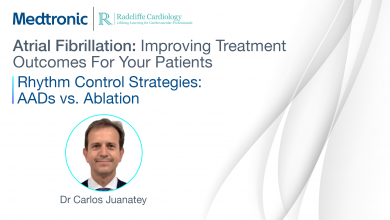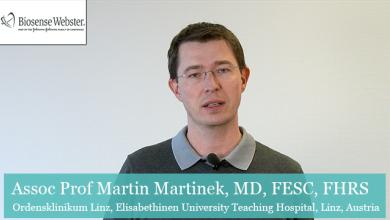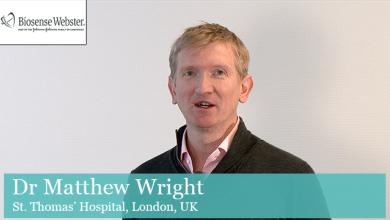Search results
Author(s):
Akihiko Nogami
Added:
3 years ago
No apparent structural abnormality is identified in approximately 10% of all sustained monomorphic ventricular tachycardias (VTs) in the US1 and in 20% of those in Japan.2 These VTs are referred to as ‘idiopathic’. Idiopathic VTs usually occur in specific locations and have specific QRS morphologies, whereas VTs associated with structural heart disease have a QRS morphology that tends to indicate…
View more
Author(s):
Carlos Juanatey
Added:
2 years ago
Learn from Dr Carlos Juanatey as he reviews the latest data supporting rhythm control strategies.
Key Learning Objectives:
The role of rate control and rhythm control strategies
Comparing safety, efficacy and quality of life datafor different patient populations
Halting Atrial Fibrillation progression with AADs vs. ablation
You can also view a roundtable discussion moderated by…
View more
Author(s):
Helmut Pürerfellner
Added:
5 years ago
Real-World Application: Contact Force Ablation
View more
Author(s):
Charles Knight
,
Saidi Mohiddin
Added:
3 years ago
The management of patients with hypertrophic cardiomyopathy (HCM) requires expertise in heart failure, cardiac imaging, electrophysiology, genetic testing and counselling, and in techniques that reduce left ventricular outflow tract obstruction (LVOTO). Following the initial description of alcohol septal ablation (ASA) in 1995,1 it has gained rapid acceptance and is now the most commonly chosen…
View more
Author(s):
Martin Martinek
Added:
5 years ago
Real-World Application: Contact Force Ablation
View more
Author(s):
Matthew Wright
Added:
5 years ago
Real-World Application: Contact Force Ablation
View more
Author(s):
Moisés Rodríguez-Mañero
,
Jose Luis Martínez-Sande
,
Javier García-Seara
,
et al
Added:
2 years ago
Author(s):
Michela Casella
,
Francesco Perna
,
Antonio Dello Russo
,
et al
Added:
3 years ago
In developed countries, the number of atrial fibrillation (AF) catheter ablation procedures increases every year. Continuous scientific and technological innovation in the area of AF ablation has broadened the spectrum of therapeutic options for patients with AF, and it is likely to be a contributing factor in making AF ablation a practice no longer restricted to a few operators with greater…
View more
Author(s):
Charalampos Kriatselis
Added:
3 years ago
Atrial fibrillation (AF) is the most common form of cardiac arrhythmia and is associated with high rates of morbidity and mortality.1 AF can be paroxysmal or persistent, and remains asymptomatic in some cases. However, in more severe and persistent cases AF may cause congestive heart failure, palpitations, syncope, and chest pains. Additionally, patients with AF have a significantly higher risk…
View more
Author(s):
Alexander Feldman
,
Jonathan M Kalman
Added:
3 years ago
Focal atrial tachycardia (AT) is the least common type of supraventricular tachycardia, accounting for 5–15% of cases presenting to the electrophysiology (EP) laboratory for ablation.1 Focal AT is defined by the presence of a discrete atrial focus with centrifugal spread of atrial activation away from that site.2 It is generally poorly responsive to pharmacological therapy and may be responsible…
View more














 « First
« First